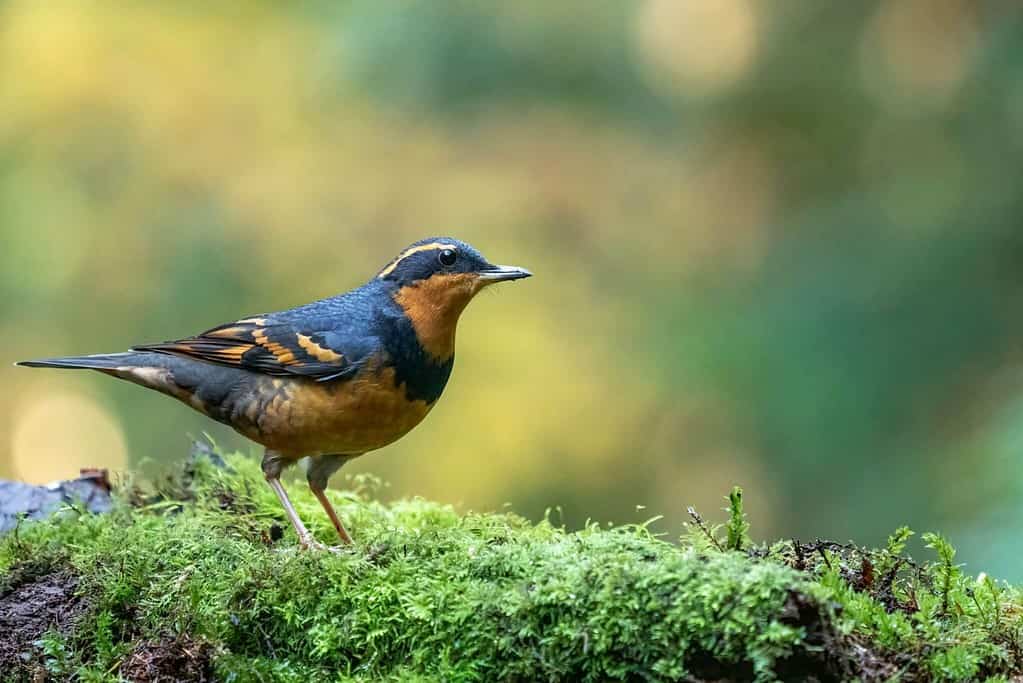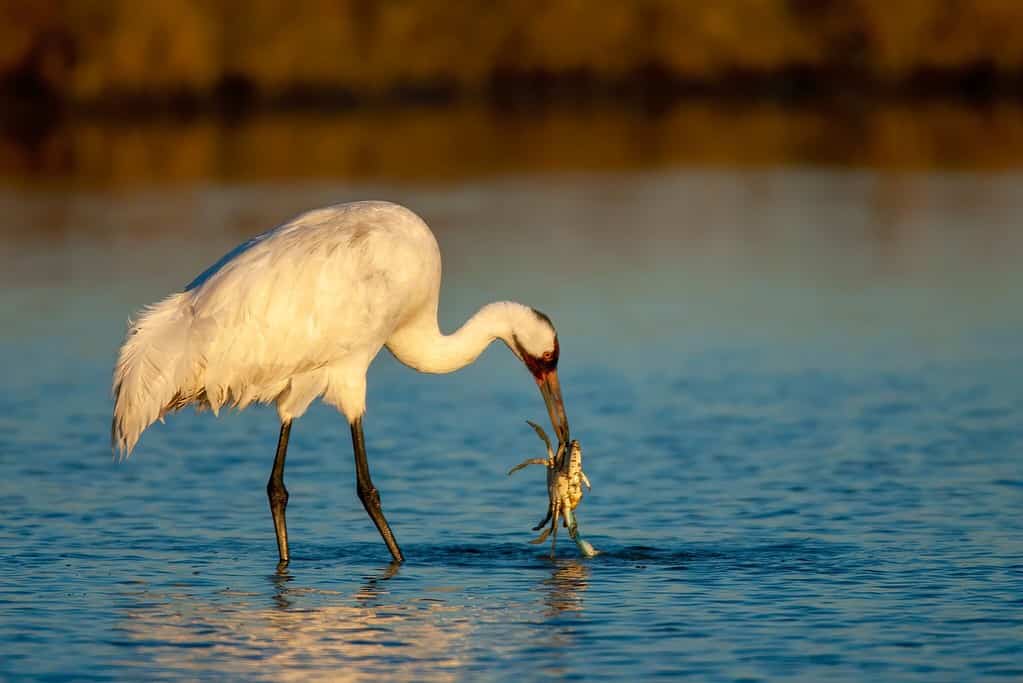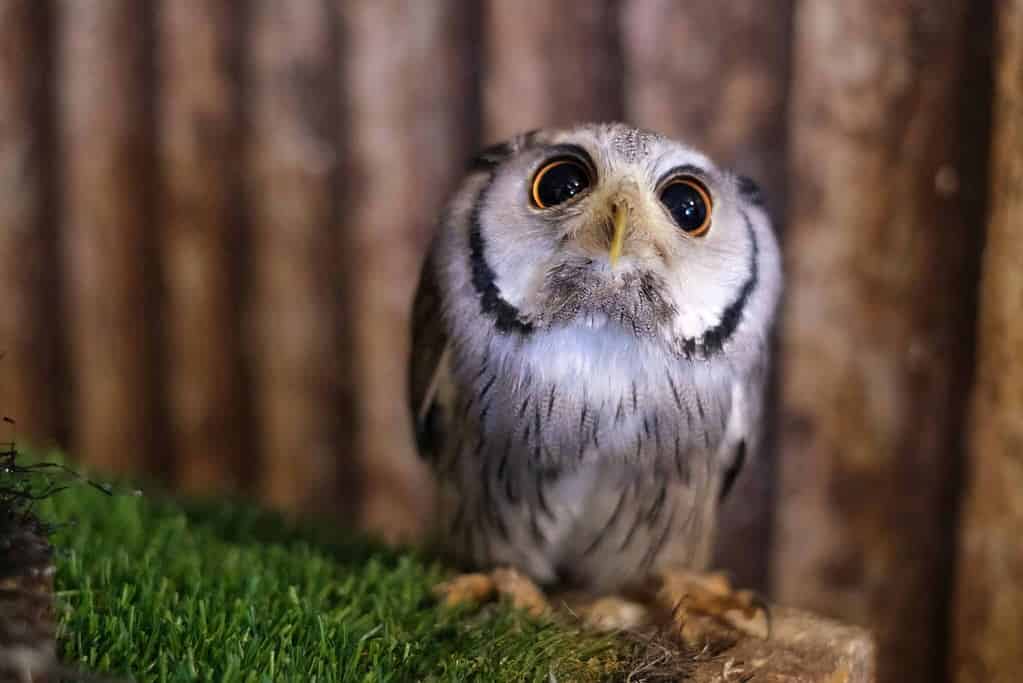For bird watchers the United States can be the land of unlimited possibilities including the world’s rarest species.
Bird watching is not only a big draw for photographers and tourists visiting India, Africa, and other hot travel and tourism destinations.
Catching a glimpse of an elusive or even common bird in the United States can be a hugely exciting experience however, many avian populations are rapidly declining and rely on long-term conservation efforts to survive.
Dr. Mya Rose Craig, a 20-year-old birder, environmentalist, and author, has teamed up with a long-range optic specialist to highlight some rarer species and reveal the best places in the USA to spot them.
The five top birds to spot include:

Varied Thrush Sitting on Moss log, by Danita Delimont on Shutterstock
Gunnison Sage Grouse in South West Colorado in early Spring
This is a species of grouse endemic to the USA and was only described as a new species in 2000 – making it the first new avian species to be described to science from the USA since the 19th century.
It has been reduced to less than 1800 birds and may be extinct before I can see it. It is restricted to only seven counties in southwestern Colorado and one in south-eastern Utah.
My top tip for spotting the Gunnison Sage Grouse is to visit areas of sagebrush in South West Colorado during early Spring when males congregate on leks (open areas adjacent to dense sagebrush stands) during early morning and early evening to perform elaborate strutting displays to attract females.

Adult Whooping Crane – Shutterstock
Wintering Whooping Cranes on the Aransas National Wildlife Refuge on Texas Coast
This is a cool bird. It is the tallest North American bird, named after its whooping sound. It is endangered and one of two crane species native to North America. In 2008, I saw the other, Sandhill Crane, in the UK and would love to see this one.
It was down to just 21 wild and two captive whooping cranes by 1941, but through conservation efforts, it is now up to 800 birds, which is unfortunately still nowhere near a healthy number.
Breeding populations can be seen wintering along the Gulf coast of Texas, United States, and near Rockport on the Aransas National Wildlife Refuge – a 114,657-acre protected area on the southwest side of San Antonio Bay.
Varied Thrush on the West Coast of North America from Alaska to Northern California in Autumn
In October 2021, there was a fantastic record of a Varied Thrush spotted in Orkney. Unfortunately, I missed out on this exciting sight in the UK, making seeing this bird on the west coast of North America even more critical.
These birds are typically easier to hear than see from their call, which usually marks the start of Autumn.
It can be seen on its breeding grounds and wet forests as far north as Alaska down to northern California before it migrates South.
During Autumn, they usually head to lower levels and can be spotted in parks or gardens.
Kirtland’s Warbler in Ontario, Wisconsin, and Michigan in Spring and Summer

Elf Owl – Credit Shutterstock
A small songbird, Kirtland’s Warbler is also known as the jack pine warbler in Michigan.
It almost became extinct nearly 50 years ago, but population numbers have recovered due to a conservation program.
They spend the Spring and Summer in their breeding range in Ontario, Wisconsin, or Michigan, the north-eastern Lower Peninsula of Michigan, and Winter mainly in The Bahamas and Cuba.
Being one of the rarest songbirds in the USA, it breeds in young jack pine forests in Michigan, with populations wintering along the Gulf coast of Texas and near Rockport on the Aransas National Wildlife Refuge.
Elf Owl in New Mexico, Baha Californian Peninsula, Arizona, and Texas in Spring and Summer
The world’s smallest owl and, I also think, the cutest.
It is about the size of a sparrow and lives in New Mexico, Baja Californian peninsula, Arizona, and Texas, often living in woodpecker holes in cacti.
It is nocturnal and feeds primarily on insects. The Elf Owl is known to migrate in large groups, with migration patterns varying depending on the flock and habitat location.
I love that they pretend to be dead when handled, an adaption that encourages a predator to relax its grip so that the owl can escape.
You stand a reasonable chance of seeing one in the dry thorn forests of the Southern border of the USA and Mexico or when broods migrate to the southwestern areas of California, Arizona, and Texas during Spring and Summer to breed.





